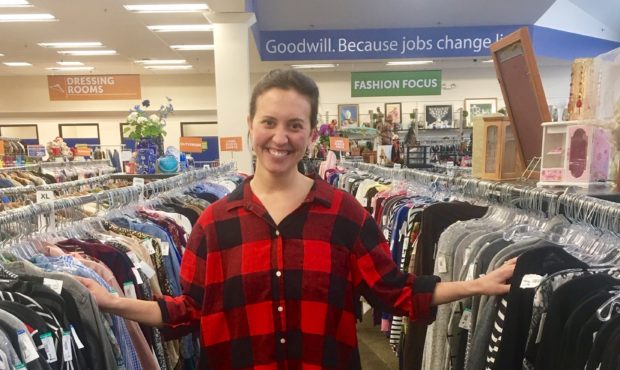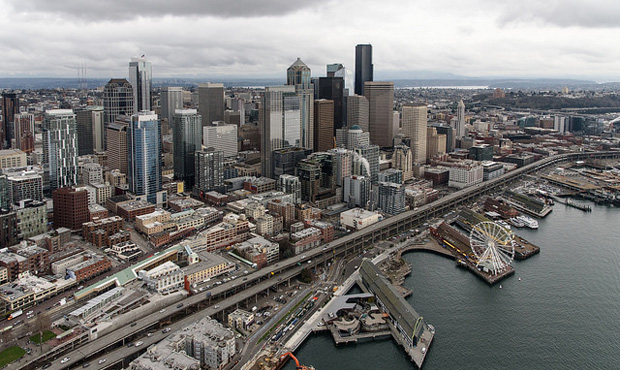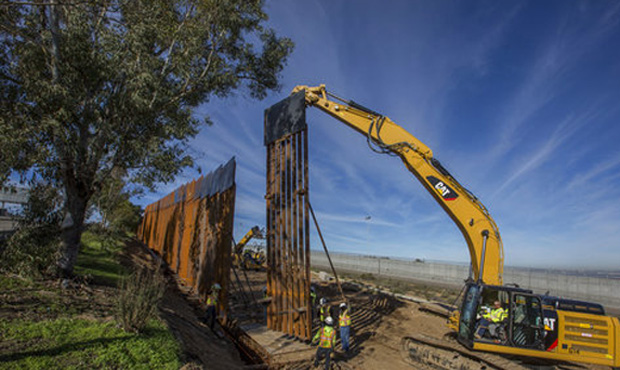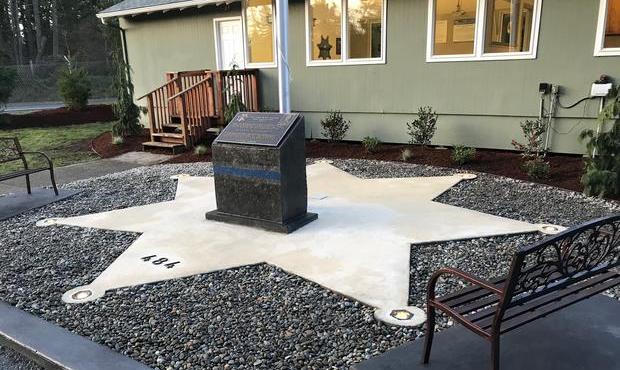I went looking for courage and found it 4,941 miles away
Oct 22, 2018, 11:19 AM | Updated: 2:42 pm
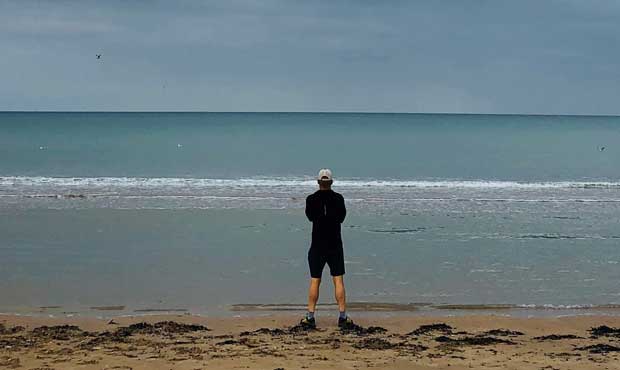
Don O'Neill on Omaha Beach. (Don O'Neill, KIRO Radio)
(Don O'Neill, KIRO Radio)
I recently had a friend challenge me to travel. I had seen what travel had done for her world perspective, and I wanted what she had. She had told me “it connects you more with the good of humanity and it helps you to be a better world citizen. It helps you be kinder and more understanding to strangers. She said it would challenge and change my world perspective, and it would be bonding and magical.
PHOTOS: Don’s trip to the France’s WWII beaches
Now time out on the magical. Hold the bonding!
One problem, when you have a fear about flying, like I do, the anxiety cancels out the magic every time. The fear grips you, like my son grips his teddy bear during a bad rain storm. So, I had to go to work on that. I went and sought out help. Yes, I am a 51 year old man that went and talked to a therapist about it. She helped me acknowledge that the fear was real, which was very embarrassing at first. But overtime and as I learned more about my fear, I became empowered. That’s when I applied for my first passport.
Let the magic begin!
My first passport was sent back to me by the United States government. I was smiling too much in my photo. How can you smile too much? I thought it was a magical smile. So on my second attempt I made sure I looked as serious as a heart attack.
As a federal agent told me as she looked at my passport in London, “You look like a very fierce lad. What are you so angry about?” I told her I was angry my first passport picture didn’t work because I wasn’t fierce enough. She stamped it, we both laughed, and she promised me it was the fiercest one she has seen this week.
With the rest of Seattle, we were off to London for a football game, but I promise to spare you the all the vacation photos, the vacation advice, and the stories of travel debacle you don’t want to hear about. I am not Anthony Bourdain. But I do want to share a couple things: I did bring my running shoes; we didn’t go to the football game; I did find something very magical; and I did make an attempt at some rhymes.
You know — rhymes. This is called “I went to Europe and I ran.” (No not Iran. “I ran.” And no, it’s not the Flock of Seagulls reference.)
So I just went to Europe and I ran …
I ran by the palaces where king and queens were wed, and now many of those royals are dead.
I ran by two different rivers that should almost rhyme in the Themes and the Seine.
We rolled by the courts where John McEnroe played and the Champ-Elysees where Lance Armstrong’s career as a cyclist began to fade.
We saw the famous house at 10 Downing Street, and the bunker where Churchill determined the world would not retreat.
We learned the difference between a lad and a chap, and we ate croissants and pastries til we got fat.
But 10 years from now when the memory of this trip fades, I will remember one thing I will take to my grave.
In all seriousness, what I will remember are those American Cemeteries and Memorials in Normandy, France. Sometimes in life when you can’t find personal courage you go searching for it, and you can find it somewhere outside yourself. I’ve been looking for that kind of courage in my own life this year.
A trip to the beach
Every since I was a young man I have always wanted to go to the beaches of Normandy, France where brave American, British, and Canadian troops stormed five beaches and changed the direction of World War II. It’s one thing to read about it in history books, it is another thing to stand on the beaches and in the hedgerows where these young men full of fear, turned toward courage, and each other, and drew a literal line in the sand, and signaled to Adolph Hitler and the rest of the world, they would not be driven back into the sea.
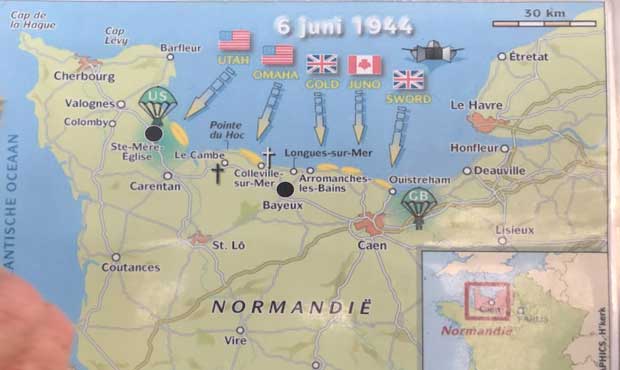
We hired a guide by the name of Dale Booth. Dale is one of the top guides in Normandy, was a British Soldier himself, and has co-written a book called “Following In The Footsteps of Heroes.” Our tours were of the two American Beaches and the hedgerows behind them where the 82nd and 101st airborne flew inland to take out the German’s big guns called “THE 88s”and to clear the causeways and the beaches for Allied trucks and tanks, and troops to move in land and head toward Paris.
These beaches are even more famous today because Utah Beach was the inspiration for the movie “The Longest Day,” and Omaha Beach was the inspiration for “Saving Private Ryan.” There have also been many war movies about the American Army Rangers climbing the cliffs at Pointe Du Hoc which lies between Utah and Omaha. Yes, these beaches were also the inspiration for A Band of Brothers. These were the boys of “The Big Red One,” “The Screaming Eagles,” “The 29ers,” and “Easy Company.”
To understand what exactly happened on the all five beaches of Utah, Omaha, Juno, Sword, and Gold it was helpful for us to stand right on those beaches as our guide explained to us how young 18-year-old men jumped out of those American Higgins boats made of plywood, only to be mowed down by the machine gun killing-pits the Germans had built all over the beaches of Normandy called “Widerstandnests” (You can read more about these in Dale’s book).
And to appreciate what the airborne was going through at the same time, in the flooded farm fields six miles in (they were flooded by the Germans to drown the Allies parachuting in), we went and walked among the hedgerows and we walked through the muddy potato fields. In fact, the hedgerows were originally built by the Vikings as barriers to strike down the horrible wind and pelting rain while they farmed. The Germans turned these fields of hedgerows into death traps for incoming, and unsuspecting Allied soldiers.
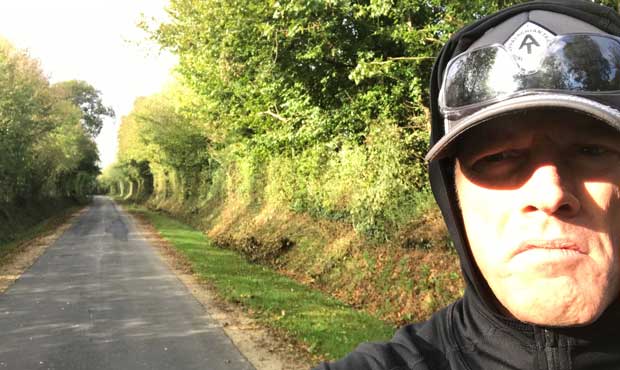
The greatest generation
And we often think D-Day and the invasion lasted one day that started on June 6th, 1944. The violent and bloody battle for Normandy actually stretched on for 77 days. When the machine gun fire stopped, and the last Panzer tank was blown up 425,000 humans on all sides were dead, wounded, or missing. And 209,000 of those would be Allied soldiers; 20,000 of them would be local towns people caught in the crossfire. Add to that total the 60 million humans that were killed in this war. And now these surviving soldiers would have to go on and fight inland in places like Paris, Holland, Berlin, and “The Battle of The Bulge” before the Allies would claim victory.
Even now the farmers are back farming apples, and beets, corn, and potatoes in the those farmlands and the hedgerows of Normandy today, over 3,000 monuments, chapels, and memorials that honor the men of D-Day remain along the coast. They are all paid for and maintained by local French towns that are still so appreciative for the liberation of their country. They are breathtaking. They are magical.
After spending some time on the American beaches of Utah, Pointe Du Hoc, and Omaha, and spending some time walking through the farmlands where the airborne touched down in their parachutes and gliders, our tour ended at one of the 30 Allied cemeteries. Even though the cemeteries are on French soil, they have been gifted to the United States.
When you stand in the American Cemetery overlooking Omaha Beach where such violent acts occurred, it is a humbling and an awe-inspiring experience to feel like you are standing in one of the most peaceful, important places in the world.
We were encouraged to respectfully walk among their graves and to read their names, to see their ages, and what state they were from. Most of them were privates and sergeants. Most of them were not even 20, and all of them came from every state in the union just over 74 years ago.

And so we sat with them. And we cried for them. And we were so grateful for their young extinguished lives. I wanted to take them all home, but they are home.
So the next time I am awarded the opportunity to fly in a plane, I will remember that I didn’t have to jump out of one, with 160 pounds of gear tied to my person, in a hail of machine gun fire, in a foreign land where an opposing army is determined to kill me.
I will remember this Band of Brothers, this greatest generation.
I went looking for courage and I found it 4,941 miles away on the beaches and in the graveyards of Normandy, France.
See you on the radio. ~Don


